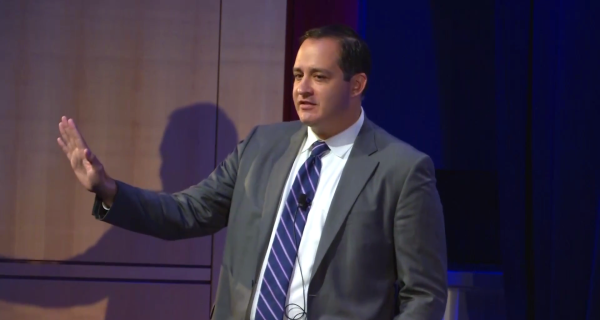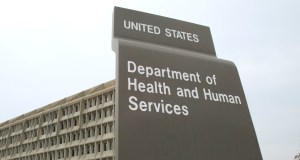HHS changed its business model in building the White House coronavirus system

The Department of Health and Human Services changed the way it conducts business so it could rapidly develop its system for providing a common operating picture on the coronavirus pandemic.
HHS Protect launched April 10 and currently collects more than 200 data sets from every state and territory, 6,146 hospitals, commercial and public health labs, and 80% of private hospital labs.
Rather than standardizing 3.5 billion data elements, HHS took a flexible approach, creating multiple avenues for receiving data using commercial off-the-shelf (COTS) technologies, said Chief Information Officer José Arrieta.
“Saying that everybody is going to jump on a single platform is insane,” Arrieta said on an AFCEA Bethesda webinar Tuesday. “It’s never going to happen, especially when you’re delivering a capability that’s touching the entirety of the United States.”
Hospitals are at different levels technologically, and customizing a single platform to integrate their legacy systems would have been costly — a problem COTS solutions solved, he said.
With various secure file transfer capabilities facilitating data flows, HHS created an identity, credential and access management layer over the infrastructure that’s able to share data with other ICAM capabilities across the department.
The distributed workforce and customer set resulting from the pandemic has rendered rigid ICAM protocols — easily exploited by foreign adversaries seeking access to government datasets for their own business models — obsolete, Arrieta said.
Instead, HHS’s ICAM layer secures access to datasets individually before they’re allowed into an analysis environment, has full visibility into that access, and reauthenticates users granted access.
What’s more, the ICAM solution can be sold back to agencies performing information technology modernization at a lower cost.
“The way that you actually deliver and the way that you actually contract for a business outcome related to digitizing a process is totally different than it was a few years ago, maybe even a few months ago,” Arrieta said. “I think the pandemic has changed that.”
Within folders of data being shared, HHS gave sharers the ability to secure the information they contain at a granular level.
Ensuring sharer comfort is the “single, most important piece” to gaining access to a dataset, Arrieta said.
“As somebody that provides a data set I want to be able to have visibility into the data, how it’s parsed, how it’s curated, where it’s used, and where it is shared,” Arrieta said.
HHS Protect manages that by establishing a record of each dataset’s curation and parsing, which is hashed and then contained within a QR code before any sharing occurs with an external party.
Users log in to one location, and analysis occurs on all data at one point in time.
“We’ve actually done a test with an enterprise-grade artificial intelligence capability that runs an ensemble of 25 different scenarios off of those datasets,” Arrieta said. “So you can have full visibility in real time into some of the correlations that exist.”
The slide decks and modeling used by Dr. Deborah Birx, White House Coronavirus Task Force coordinator, in her briefings all come from HHS Protect.
“Tough” decisions about clinical trials and reopening the economy are informed by HHS Protect analysis, Arrieta said.
“Our goal is to allow scientists to go back to being curious,” he said.






